|
Red-eyed
Vireo / Viréo aux yeux rouges (Vireo olivaceus) |
Seasonal
status at MBO:
| JAN
|
FEB
|
MAR
|
APR
|
MAY
|
JUN
|
JUL
|
AUG
|
SEP
|
OCT
|
NOV
|
DEC
|
|
|
|
QUICK TIPS:
| 1) Check
the iris colour - it is grayish-brown on
HY/SY birds, and red on AHY/ASY birds; note that
this is only reliable from summer through March;
eye colour should not be used to assess age during
spring migration.
2) Look at
the upper mandible lining - it is pinkish-gray
to white on HY/SY birds, and dark gray on AHY/ASY
birds; note that this is only reliable from summer
through February; mouth colour should not be used to
assess age during spring migration.
3 In
spring, look for molt limits among the
secondaries - on SY birds there is little
contrast in wear between the tertials and middle
secondaries (all of which are fairly worn), while on ASY birds the
tertials are considerably more worn and abraded than the
middle secondaries (but all of which are relatively
fresh). |
|
Ageing and sexing guidelines:
Ageing and sexing details:
|
after-second-year
unknown |
In
spring, all ages and sexes of Red-eyed Vireo have a similar overall
appearance, and it is necessary to view the wings and tail to distinguish
among them.
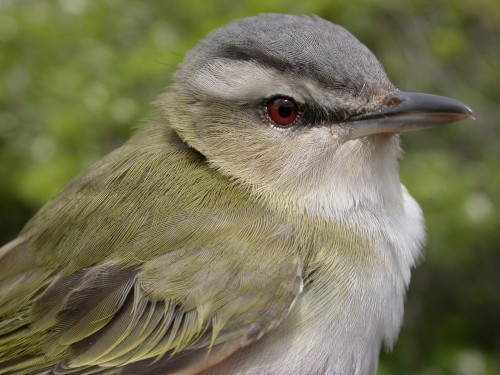
Photo by Marcel Gahbauer,
May 2005
One
of the key distinguishing features of ASY Red-eyed Vireos is the presence
of distinct green edging on fairly broad and rounded primary coverts, as
shown in the photo below. Also sometimes useful, though not visible in this
photo, is a contrast between secondaries 1-6 (fresher) and 7-9 (older and
more faded).
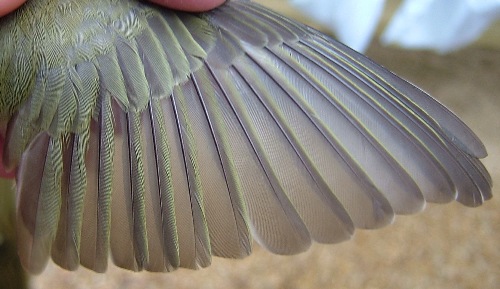
Photo by Peter Pyle, Howell Woods (NC), May 2006
ASY
Red-eyed Vireos have relatively broad, truncate, and fresh rectrices.
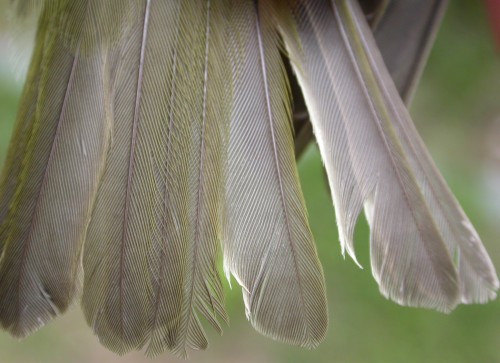
Photo by Marcel Gahbauer,
May 2005
RETURN TO AGE/SEX
OVERVIEW
In
spring, all ages and sexes of Red-eyed Vireo have a similar overall
appearance, and it is necessary to view the wings and tail to distinguish
among them. However, sometimes SY birds will retain a somewhat
brownish tone to the iris, as in the bird below.
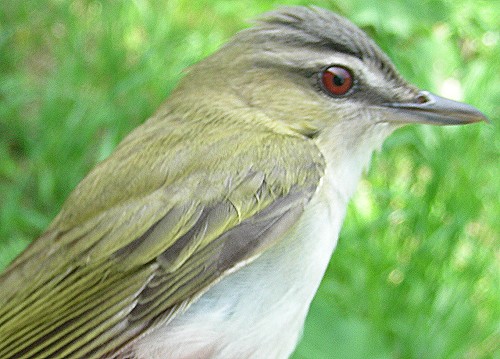
Photo by Marie-Anne Hudson, May 2007
The primary coverts on SY birds are narrower and more tapered than on
ASY individuals, and with little or no greenish edging. The
secondaries are uniform in age.
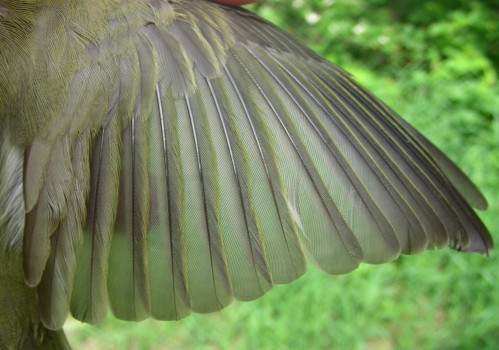
Photo by Marie-Anne Hudson, May 2007
The rectrices on SY birds tend to be somewhat narrower and more tapered,
and of weaker quality than those on ASY birds.
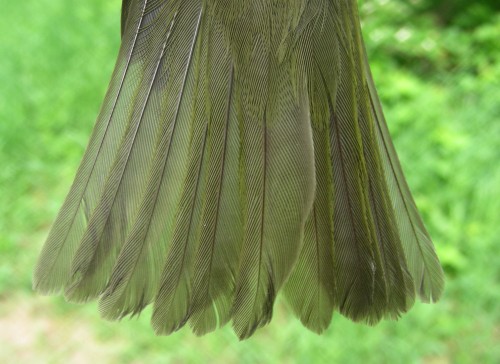
Photo by Marie-Anne
Hudson, May 2007
RETURN TO AGE/SEX
OVERVIEW
In
fall, Red-eyed Vireos are generally indistinguishable with regard to sex,
aside from exceptionally small females or large males (as measured by
wing chord). However, ageing is easily done by iris colour:
red in after-hatch-year birds, and brownish in hatch-year birds.
Additionally, the roof of the mouth is dark gray in adults, noticeably
different from the pale gray or pink in hatch-year birds.
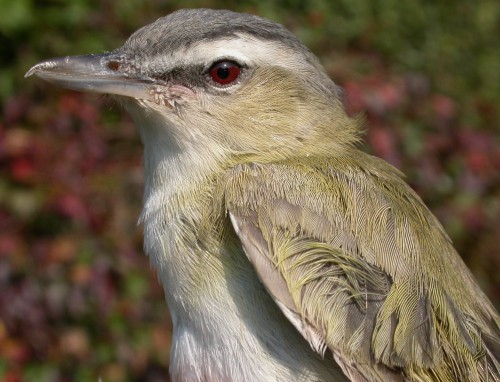
Photo by Marcel Gahbauer,
August 2005
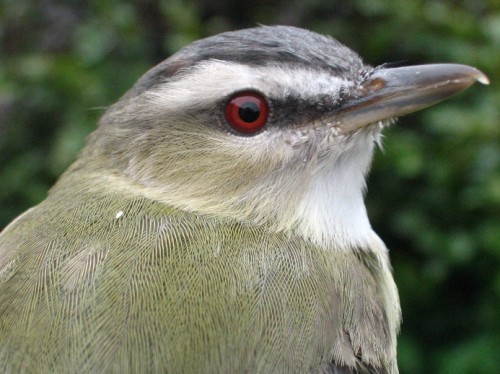
Photo by Seabrooke Leckie,
August 2006
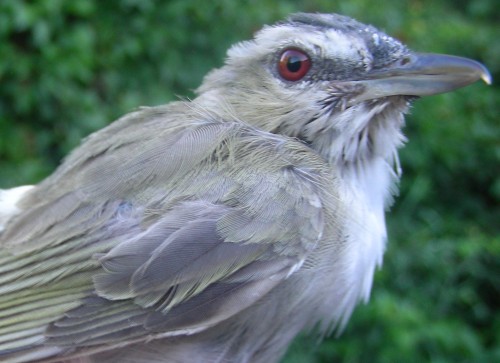
Photo by Marie-Anne
Hudson, McGill Bird Observatory, August 2007
Red-eyed
Vireos are somewhat unusual in that the prebasic moult commences on the
breeding grounds, but in adults the majority of it takes place during
winter. As such, there may be moult limits in the wing of older
birds, whereas they are unlikely in younger birds (the reverse of the
usual pattern). In practice, however, they are relatively
infrequently seen, and other features (iris, mouth lining, and tail) are
all easier and more reliable..
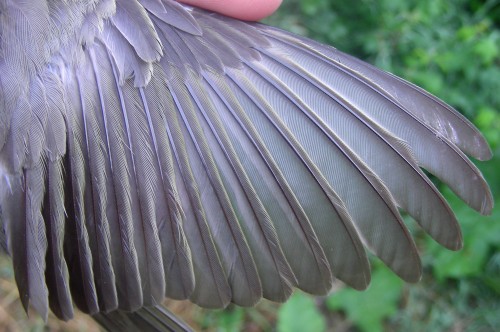
Photo by Marie-Anne
Hudson, McGill Bird Observatory, August 2007
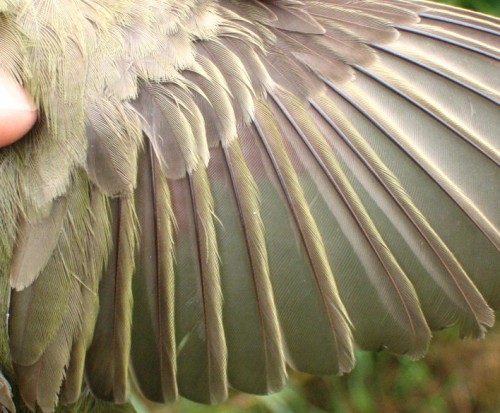
Photo by Seabrooke Leckie,
August 2006
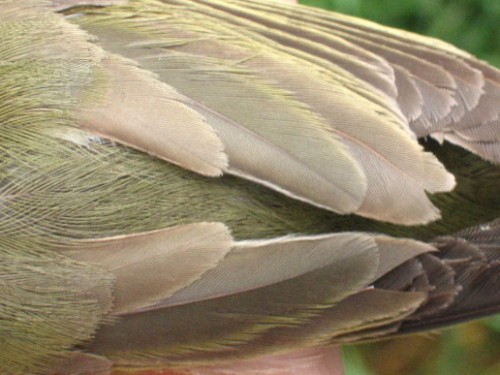
Photo by Seabrooke Leckie, August 2006
AHY
Red-eyed Vireos may have a uniform tail comprised of relatively broad and
truncate rectrices. However, some begin replacing the central
rectrices prior to migration (as shown in the second photo below), and this is
a reliable indicator of age, as hatch-year Red-eyed Vireos do not replace
any rectrices in their limited prebasic moult.
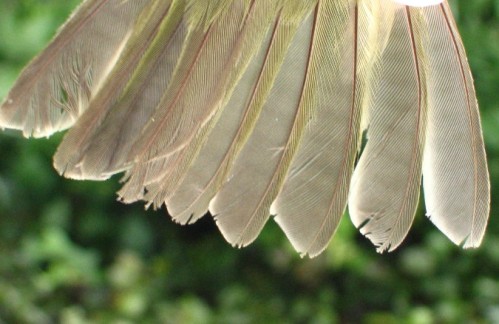
Photo by Seabrooke Leckie,
August 2006
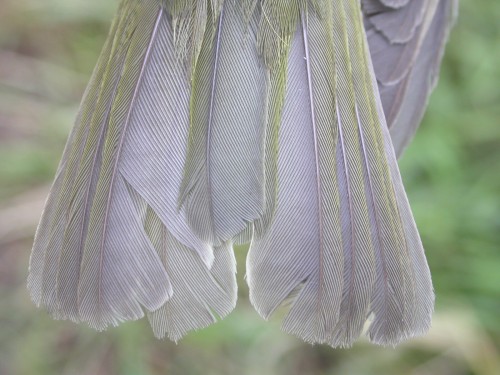
Photo by Marcel Gahbauer,
August 2005
RETURN TO AGE/SEX
OVERVIEW
In
fall, Red-eyed Vireos are generally indistinguishable with regard to sex,
aside from exceptionally small females or large males (as measured by
wing chord). However, ageing is easily done by iris colour:
red in after-hatch-year birds, and brownish in hatch-year birds.
Additionally, the roof of the mouth is pale gray or pinkish in
hatch-year birds, noticeably lighter than the dark gray of adults.
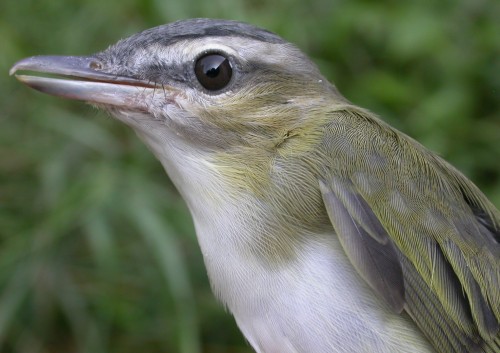
Photo by Marcel Gahbauer,
August 2005
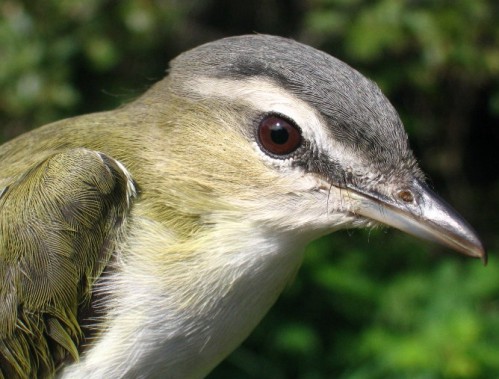
Photo by Seabrooke Leckie,
August 2006
Hatch-year
Red-eyed Vireos undergo only a very limited prebasic moult, and that of
the adults is also not very advanced by the time of migration, therefore
the wings are not particularly informative with this species.
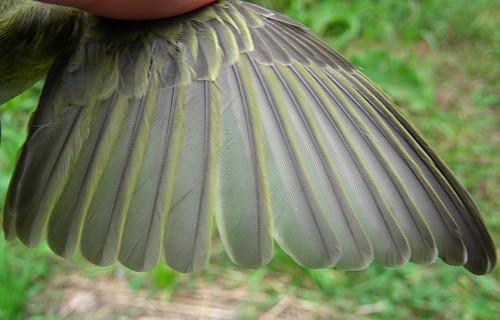
Photo by Marie-Anne
Hudson, McGill Bird Observatory, August 2007
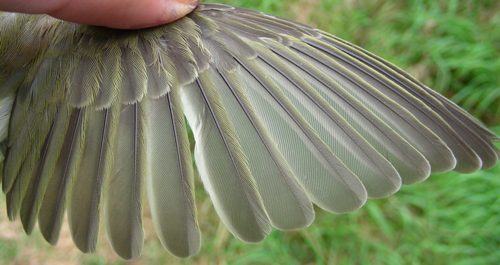
Photo by Marcel Gahbauer,
September 2008
HY
Red-eyed Vireos do not replace any rectrices during their first prebasic
moult, therefore all tail feathers are expected to appear relatively
uniform. They tend to be more narrow and tapered than those of AHY
birds.
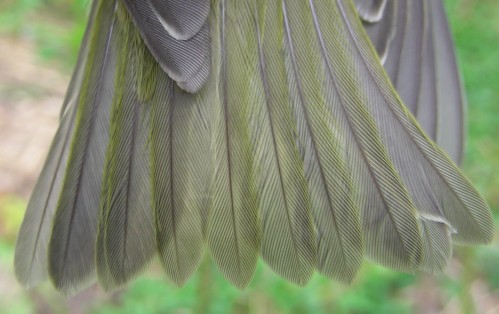
Photo by Marie-Anne
Hudson, McGill Bird Observatory, August 2007
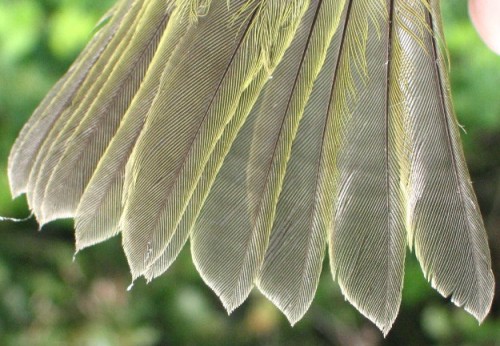
Photo by Seabrooke Leckie,
August 2006
RETURN TO AGE/SEX
OVERVIEW
|